A Union soldier was looking for a souvenir back in 1865 when he swiped a rare copy of the Bill of Rights. The Mona Lisa was taken from the Louvre by a man in 1911. Many decades later, an iconic stone that had been used for centuries in royal coronations was taken by a small group of college students leaving London’s Westminster Abbey. Continue reading if you want to learn how these priceless objects were recovered and how stolen items linked to Walt Whitman and King Croesus were regained.
1. Stone of Scone
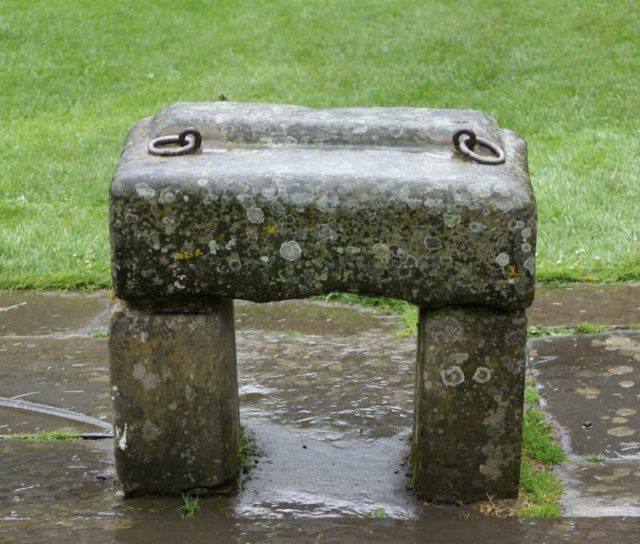
In 1950 on Christmas morning, four college students from Scotland broke into London’s Westminster Abbey before taking an old block of sandstone used for centuries in the coronation of Scottish monarchs. That is until it was taken from Scotland’s Scone Abbey in 1296 by England’s King Edward I. This was also referred to as the Stone of Destiny which the king had moved to Westminster Abbey, and put into a special chair that both English and later British monarchs have been crowned since early into the 14th century.
It is not entirely clear where the artifacts originated from, but one legend claims the biblical figure Jacob used the stone as a pillow. The Scottish student saw this removal of the stone as an act of nationalism. During the act of theft, they broke it in two. The incident was covered around the world, but the police were unable to find the stone. Finally, in April 1951 the large artifact was seen at Scotland’s Arbroath Abbey covered in a national flag. The authorities were able to figure out the identity of the students involved in the heist, but they were never prosecuted. Fortunately, the stone was returned to Westminster Abbey before Queen Elizabeth’s 1953 coronation. In 1996, on the 700th anniversary of its removal, the British government opted to send the artifact back to Scotland. There was just one condition. It had to be used for future royal coronations at Westminster Abbey. Edinburgh Castle hosts the Stone of Scone currently.
2. Walt Whitman’s notebooks
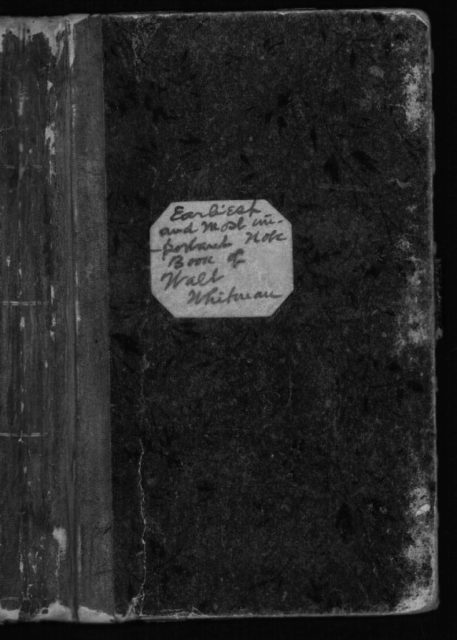
During World War II yeas in the early 1940s, the Library of Congress gathered a bunch of valuable items in its collections before sending them to a different location outside of Washington, D.C. for safety purposes. There were 10 notebooks that belonged to the famous poet Walt Whitman (1819-92). At some point during the transportation process, the notebooks went missing and were thought to be stolen. They had been donated to the library in 1918 by one of his literary executors.
These notebooks have early writings of material that later appeared in Whitman’s well known 1855 book of poetry titled “Leaves of Grass”. It also included a chronicle of Whitman working as a nurse for the Union Army during the United States Civil War. 50 years after the notebooks went missing, four of them were found in 1995 at Sotheby’s auction house in New York. A man had found them mixed in with his deceased father’s possessions. The man claimed that his father had received these notebooks as a gift which he kept for 30 years. In 1995, the notebooks were valued at $500,000, but the man did not know they had been stolen. These notebooks were returned to the Library of Congress, but the other 6 volumes are still unknown.
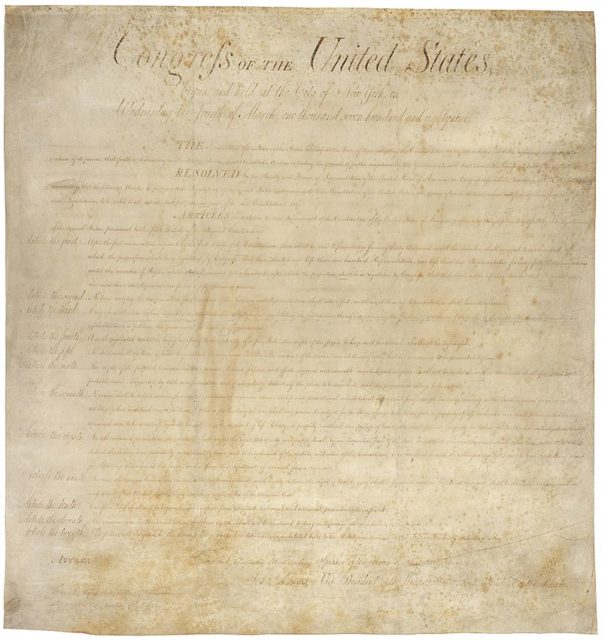
3. Original copy of the Bill of Rights
After the American Revolution ended, President George Washington had 13 handwritten copies of the Bill of Rights made in 1789. One copy was sent to each state for ratification. At the end of the Civil War, a Union Soldier who wanted a souvenir took the copy that belonged to North Carolina from the state house located in Raleigh. The next year, the soldier sold the document for only five dollars to a man that simply framed it for his office wall in Indiana. However, in the 1920s, the man tried to sell the historic artifact back to North Carolina, but officials refused to make the purchase. The document was classified as stolen government property. There was no news reported about this document until 1995 rolled around. It was then that an anonymous seller offered it to North Carolina, but once again the officials refused to make the purchase for something they felt the state already owned. A final attempt to sell the document was made in 2003 for $4 million to a Philadelphia museum. The FBI got wind of this and seized it in a sting operation. A legal fight ensued in which one of the men involved in interrupted sale claimed to be the rightful owner of the document. A court rendered a ruling that it actually belonged to North Carolina.
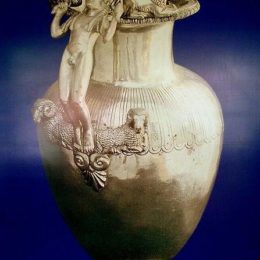
4. Lydian Hoard
The Turkish government sued the New York City’s Metropolitan Museum of Art in 1987. Turkey wanted a collection of artifacts from the Lydian Kingdom in western Asia Minor to be returned. This kingdom rose to power in the sixth and seventh centuries B.C. King Croesus was a legendary king that ruled Lydia in the sixth century B.C. The Turkish officials believe the artifacts (referred to as both the Lydian Hoard and the Karun Treasure) were looted from burial grounds in the western part of Turkey in the 1960s.
Then they were smuggled out of the country and sold to the NYC museum. In 1993, the museum agreed to return the artifacts to Turkey after a long and arduous court battle. The artifacts were put on display in the Usak Archaeology Museum. Things took a turn when some of the pieces in the collection were discovered in 2006 as forgeries. This included the prominent gold brooch in the shape of a winged seahorse.
An investigation was launched that determined that the Usak museum director had sold the real brooch to pay off personal gambling debts. Once he was caught, he blamed his problems on an ancient curse linked to the brooch. There is a myth that says the people who illegally excavated the Lydian Hoard in the 1960s experienced trouble afterwards. Finally, in 2012 the Turkish government confirmed that the brooch was located in Germany. It was established that it would be returned to Turkey once again.
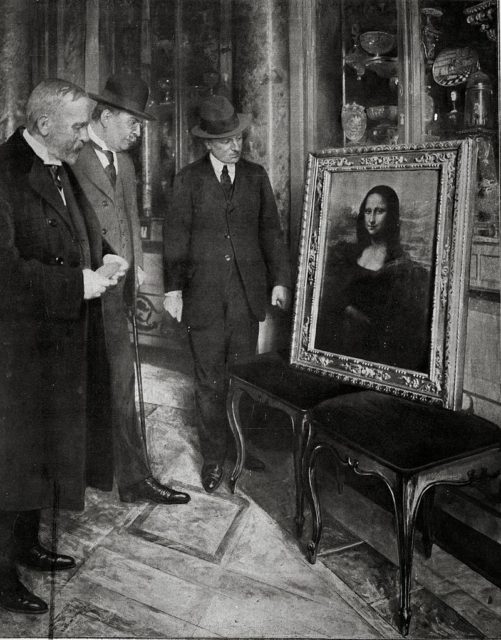
5. Mona Lisa
The Mona Lisa resides at the Louvre Museum in Paris, but in August, 1911 a man hid overnight in a closet to steal it. He came out of the closet early the next morning, when the building was still closed to the public before snatching it off the wall. It was painted by the famous artist Leonardo da Vinci in the early 1500s. The French monarchy obtained the art in the mid-16th century before placing it on public display at the museum in 1797. Not surprisingly, the theft of the Mona Lisa circulated all over the world; significantly boosting the paintings notoriety. A large manhunt was put together, but a young Pablo Picasso and American mogul and art collector J. Pierpont Morgan were among the suspects in the theft.
For two whole years there was zero sign of the missing work. In late 1913, an art dealer located in Florence opened a letter from a man who claimed to have the painting. He wanted it to be returned to its native Italy (from which he thought, incorrectly, Napoleon had stolen it). Vincenzo Peruggia was an Italian born house painted that lived in Paris. He brought the painting to Florence in order to show it to an art dealer and the director of the Uffizi Gallery. Gallery was able to authenticate it. Peruggia worked only for a short time at the Louvre, but said he took the painting for patriotic reasons. However, he was looking for a reward, but was arrested and convicted instead. He only spent less than a year behind bars for his crime. Fortunately, in January of 1914, the Mona Lisa got sent back to the Louvre where it can still be seen today.
